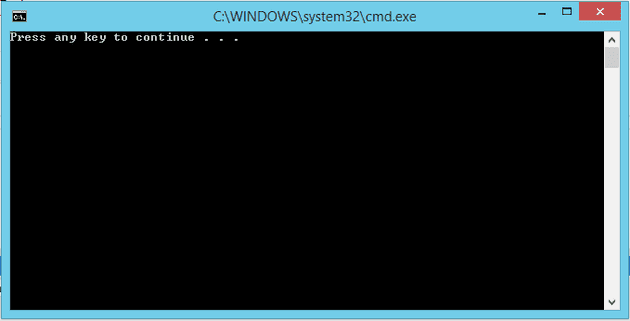This does sound counter intuitive, but let’s have a look at an example. Let’s say that I want to create an application that, when called, created a text file with a list of its own arguments, and then finishes.
Console App?
So, the first thing you think is: create a console app. Good idea; here’s what it looks like:
class Program
{
static void Main(string[] args)
{
File.WriteAllLines("tmp.txt", args);
}
}
Okay, so it’s simple and it works. And here’s what it looks like when you run it:
It won’t say “Press any key” unless you run it with Ctrl-F5 (because you want to take a screenshot).
Anyway, as unobtrusive as that it, what if you didn’t want it to appear? Well, one option (and, as usual, I don’t claim this is the only option), you could create a WPF app instead. In the App.xaml, you can specify the start-up object… or not:
So, no StartupURI element. Next, you need to override the Startup event in App.Xaml.cs:
protected override void OnStartup(StartupEventArgs e)
{
var args = e.Args.Select(a => a.ToString());
File.WriteAllLines("tmp.txt", args);
Shutdown();
}
Conclusion
And that’s it… you now have a runable app that is completely devoid of a UI.
One word of warning: if this is going to be a slightly more complex app that makes use of asynchrony, then remember that you’re closing the app here.
As usual, if anyone knows of a better method of doing this then please leave a comment or get in touch.
